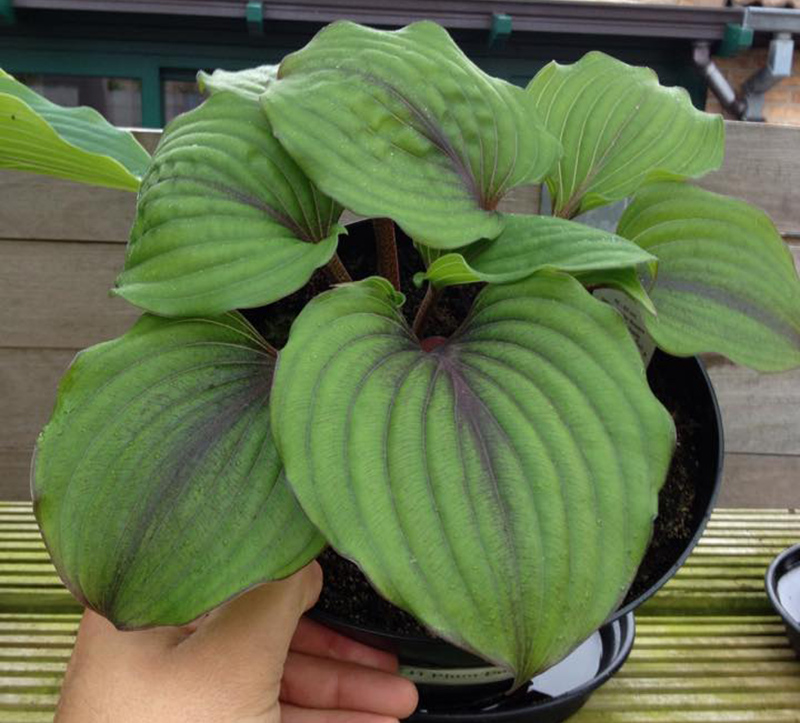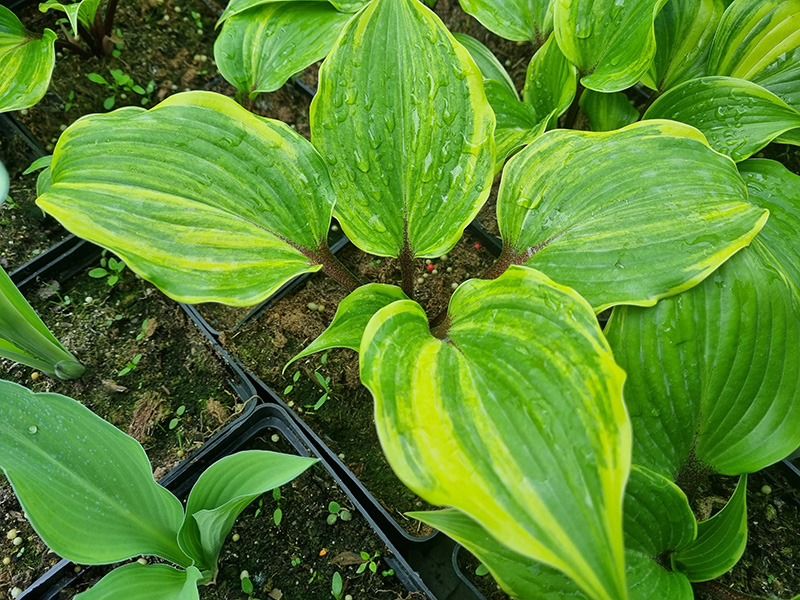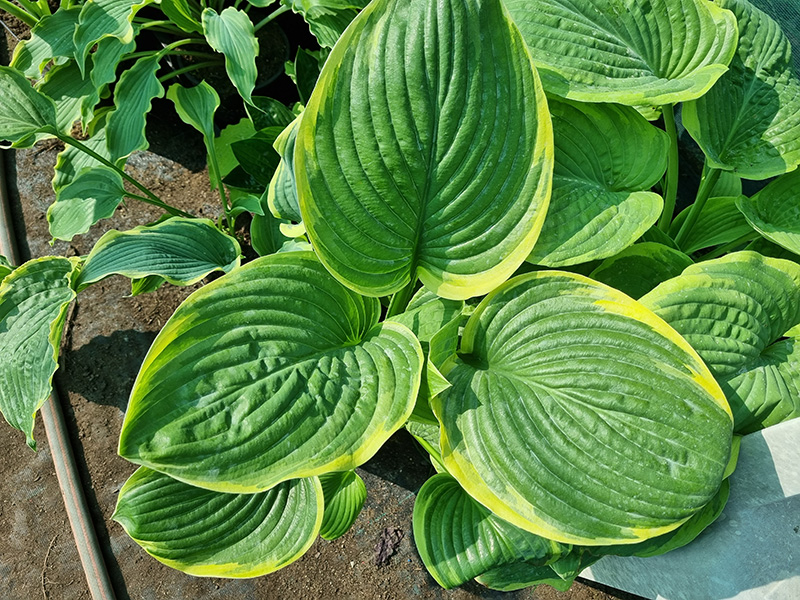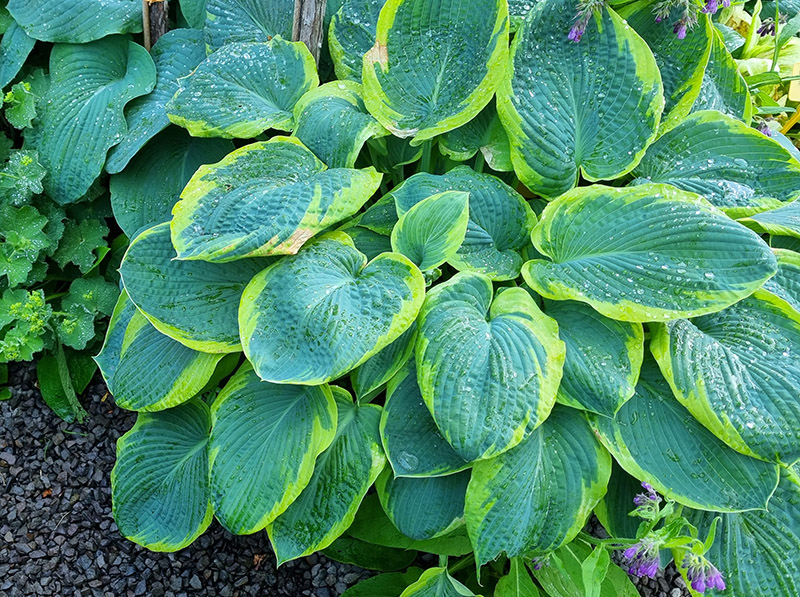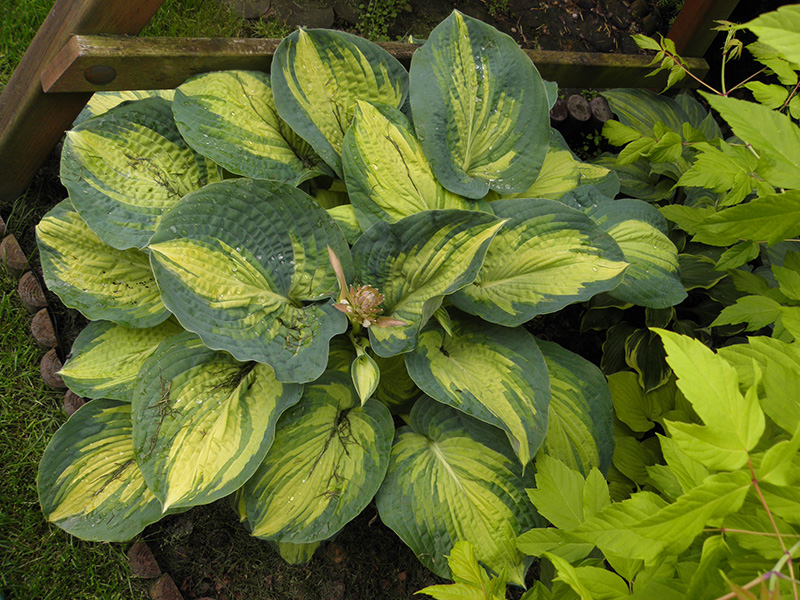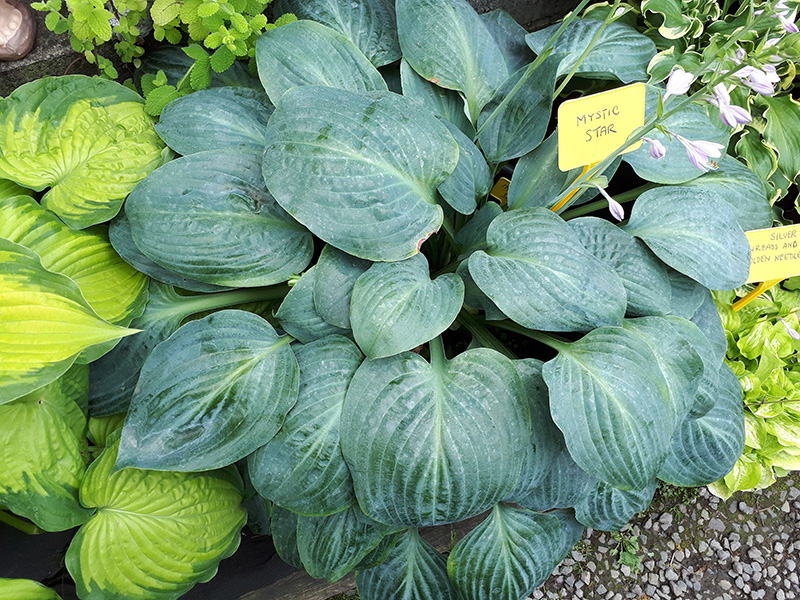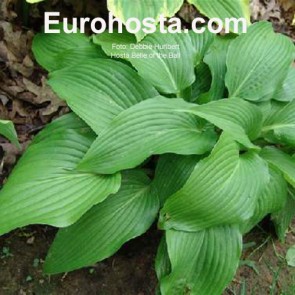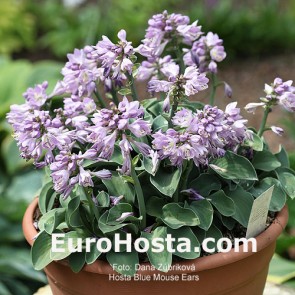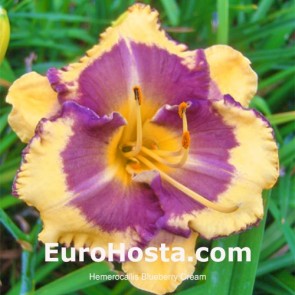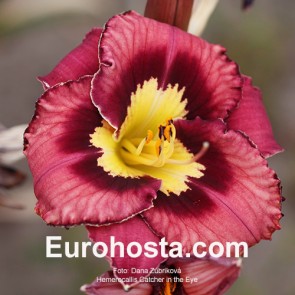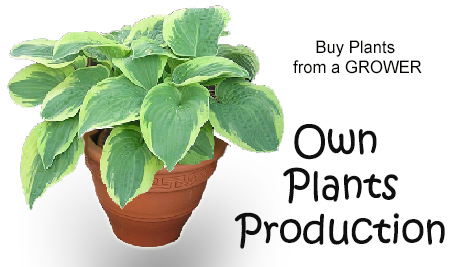Some hostas need more care... | Text: Eurohosta, January 2025
|
BLOG: Did this article interest you? Read our other articles »»» |
||||
|
We hesitated for a while before deciding to write this post. As plant sellers, pointing out some negative traits of certain cultivars might seem counterproductive and could potentially affect their sales. However, our goal is not to dissuade you from buying certain cultivars or persuade you to choose others. Instead, we simply want to advise you. We aim to inspire you to think carefully before purchasing certain hosta cultivars, to understand what needs to be done to ensure that the hostas you select grow beautifully in your garden and bring joy to you and those around you. Our notes on specific hosta cultivars are based on our many years of experience growing these plants. We cultivate our hostas in the specific conditions of Central Europe. The weather and overall climate vary greatly across different parts of Europe—conditions in northern Sweden differ from those in southern Italy, just as they differ between the mountains of Austria and the plains of Hungary. In our experience, hosta cultivars carry certain genetic information about the place where they were bred. Cultivars that were bred in an area where there are exceptionally favorable conditions for their growth (temperature, humidity, etc.), which suit them exceptionally well (for example, humid areas around the sea in Belgium, the Netherlands, and also in some parts of the USA), have more difficulty adapting to our harsher Central European climatic conditions. And the opposite is also true. Cultivars bred in the harsher climate of some US states or Europe, do better here. This is not a general rule. There are many exceptions. However, we have noticed that some cultivars do indeed behave this way. Our Growing Conditions We have very hot summers, when the temperature often rises above 30-35 °C and often stays at these values for weeks, without a drop of rain. The temperature just above the ground often approaches 40 °C. At the end of September or October, cold nights come and temperatures often drop below zero. Light frosts are enough to freeze the seeds of hostas (especially late-flowering ones) before they ripen. The latest flowering cultivars do not even have time to form seeds and the flowers freeze. Then comes winter, which in recent years has not brought too much precipitation in the form of snow. Snow appears only for a short period of 2-4 weeks and is not more than 5 - 20 c. But low temperatures are no exception - I mean temperatures below -15, -20 °C. And then comes the most difficult period for hostas - spring. At the beginning of April, temperatures start to fluctuate. Daytime temperatures rise rapidly and the sun is increasingly stronger during the day. Daytime temperatures reach 16 - 20 °C. But in the evenings it gets colder and at night temperatures drop below -5 - -10 °C. And that is a very difficult test for hostas. The tissues fill with water during the day and freeze at night. Some cultivars react to this by severely deforming the leaves. Late and very late-germinating varieties are the best. Frost damage to the leaves usually does not cause the death of the plants. This only happens very exceptionally. However, leaf damage reduces the aesthetic quality of the plants and weakens growth in the first half of the season. Already in the second half of the season, such plants return to standard condition and the differences between frost-damaged and undamaged cultivars are erased. Key Issues and Recommendations Problem 1. Overall weak vitality Certain cultivars are highly sensitive to climate changes and microclimatic conditions. Our Central European conditions may not suit them well. Generaly low vigor. Recommendations: • Start these cultivars in pots before planting them in their permanent garden location. Examples of Sensitive Cultivars: H. Plum Pudding
One from the most beautiful hostas - hosta Plum Pudding - is not a easy grower. Problem 2. Loss of variegation This occurs globally but is more pronounced in climatically challenging areas like ours. Variegated hostas lose their variegation after a certain time. It is a common problem known from Europe and America. However, in more climatically complicated conditions, which is definitely the case for our growing areas, this loss of variegation is more pronounced. We can explain this by the fact that variegated leaves, with a lower proportion of chlorophyll than pure green leaves, have a harder time surviving the winter months and die earlier than green buds that have accumulated more storage substances. Therefore, it is necessary to pay increased attention to variegated hostas. Recommendations: • Remove green buds annually. Such a cultivar should always be removed from the ground when a green bud appears, and the cabbage bud should be cut out and the plant should be planted back. If you do not do this, 4-5 years after the first green bud appears, you will have a purely green plant in your garden, instead of a variegated one. Examples of Sensitive Cultivars: H. Galaxy Hosta Exotic Treasure - streked hostas are expensive due to it spcial behaviour... Problem 3. Sensitivity to spring frosts Some cultivars do not tolerate spring frosts and react to them by damaging the edges or entire leaves. Mortality as a result of spring frost damage is not significant in our country. However, frosts reduce the aesthetic value and vitality of the plant. This problem cannot be completely prevented, because managing frost in the garden is a problem. Recommendations: • Plant the plant in a protected place where spring frosts could be less intense. Examples of Sensitive Cultivars: H. Lancifolia
Hosta Fragrant King - many fragrant hostas are sensitive to spring frost. 4. Strong summer sun Strong summer sun (meaning afternoon sun) will damage any hosta cultivar. Hostas are shade and partial shade plants and do not belong in a sunny location. Choose another perennial for a sunny location, such as a daylily - we have hundreds of cultivars to choose from. Read about sun telerance in hostas here. Recommendations: • Unlike frost, sun is easier to manage in the garden. All you need is stronger shading, planting in deeper shade or moving the pot to a shadier place. So you can manage this problem by choosing a location. The more sensitive the cultivar, the darker the corner and vice versa. Some cultivars even benefit from more sun. Examples of Sensitive Cultivars: H. Gabriel's Horn Hosta Frances WIlliams is for sure not for sunny place... Problem 5. Slow regeneration after transplanting Hostas tolerate transplanting very well. This should definitely be emphasized. We transplant them in spring, summer and autumn and we have never had a problem with their growth after transplanting. They regenerate very quickly and soon reach the size of the mother plants. However, there are a few exceptions where the above does not apply. These cultivars experience a period of regenerate more slowly - this condition is also called "transplant shock". Recommendations: • Transplant sensitive plants less frequently. To make this possible, choose a permanent location where they can grow for a longer period. Examples of Sensitive Cultivars: H. Great Expectation Hosta Kabitan gows slowly after replanting it. Problem 6. Freezing in the winter months Low temperatures dropping below -15 to -20 °C can pose a significant threat to hostas. At such extreme cold, it is reasonable to expect that some hostas may not survive. While low winter temperatures generally do not affect sprouting leaves, they can sometimes result in partial or even complete plant loss. That said, it is important to emphasize that hostas are generally very resistant to low temperatures, particularly when they are older, well-rooted plants. In our experience, we have rarely encountered serious issues in this regard. Recommendation: • Store potted hostas in a protected area during winter, such as a cellar or garage. Examples of Sensitive Cultivars: H. Fire and Ice H. Great Expectations Hosta great Expectation - sensitive to winter frost in our conditions when youg. Problem 7. Susceptibility to fungal diseases such as Botritis spp Small dark brown or black spots, the size of a pinhead, sometimes appear on the leaves of hostas. This most often occurs between May and June when daytime temperatures are high, but humidity remains elevated. These spots are caused by fungi of the genus Botrytis spp. In some cases, only a few spots appear, while in others, the leaves may be entirely covered. Even in cases of heavy infestation, these fungi do not pose a serious threat to the plant's survival or growth. However, they significantly impact the plant’s aesthetic appearance, which is crucial in ornamental gardens. The issue can affect virtually any hosta. Recommendation:
Examples of Sensitive Cultivars: H. Mango Salsa Hosta Mystic Star - sensitive to Botritis spp. Conclusion In this post, we have highlighted several hostas that may be considered challenging under our specific conditions and provided practical recommendations on how to successfully cultivate them even in demanding situations. Our goal is to show you that even more demanding varieties can thrive beautifully in your garden with the right care and a little extra attention. However, there are additional challenges you may encounter when growing hostas. About some problems with slugs we wrote here. It is hardly possible to create a complete list of absolutely problem-free hostas, as the majority of the approximately 1,000 varieties in our catalogue are known to be highly robust and adaptable, thriving excellently under our climatic conditions. Nevertheless, we would like to highlight some particularly recommended varieties that stand out for their exceptional resilience and striking beauty:: H. Allegan Fog
© This text and photos are protected by intellectual property rights under the Law no. 618/2003 Coll. (the Copyright Act). |
||||
|
BLOG: Did this article interest you? Read our other articles »»» |

